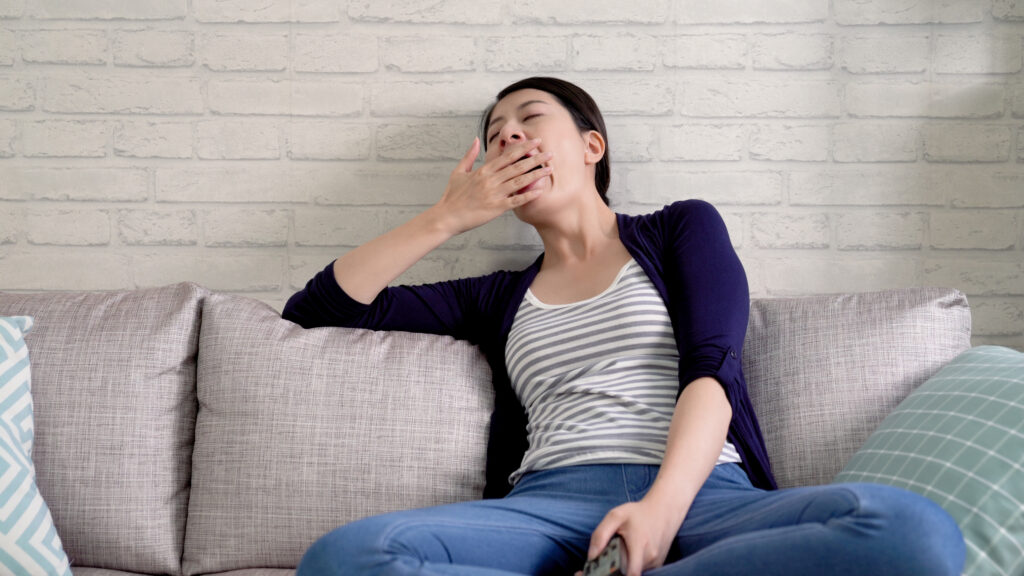●
- March 19, 2021
Part 1 of Our Science Series | Learn about why sleep matters and how poor sleep can affect your physical health, mental health, and productivity. Learn the causes behind insomnia.



Sleep restriction therapy, a critical component of cognitive behavioral therapy for insomnia (CBT-I), can be very difficult but is an effective way to teach your mind and body to learn how to sleep again.
If you’ve been struggling with chronic insomnia, you’ve probably tried everything and anything to fall asleep faster and stay asleep. From melatonin and blackout curtains to sleep hygiene tips and even medications, the list adds up quickly. But if you’re still lying awake at night or waking up exhausted in the morning, it might be time to try a different approach. That’s where Sleep Restriction Therapy (or SRT) can be useful.
SRT is one of the core components of Cognitive Behavioral Therapy for Insomnia (CBT-I). Its goal is to retrain your brain to sleep more efficiently, fall asleep faster, and stay asleep longer. Thus, if you are sleeping less, it doesn’t have to be that way forever.
While the SRT process can feel challenging at first, it’s also one of the most effective ways to permanently reset your natural sleep patterns. In this article, we’ll explain how Sleep Restriction Therapy works and what to expect during each phase of the treatment.
Before You Start: Understanding the Problem
Most people with chronic insomnia spend a lot of time in bed hoping to sleep. You might go to bed early “just in case,” or lie there for hours tossing and turning, only to end up hitting your snooze button repeatedly in the morning. Unfortunately, these habits condition your brain to associate your bed with stress and wakefulness instead of pleasant sleep.
Over time, you end up with a sleep pattern that looks like this:
Sleep Restriction Therapy helps reverse that pattern by strengthening the connection between being in bed and falling asleep, without any other distractions.
Phase 1: Reducing Time in Bed
This is usually the most difficult part of the process, and the name says it all. You’ll start by spending less time in bed based on how much sleep you’re currently getting, not how much you hope to get.
For example, if you usually lie in bed for eight hours but only sleep for five, you’ll reduce your total time in bed to match those five hours that you normally sleep. This means you’ll stay up later and still wake up at the same time every morning, even though you may feel exhausted.
Although it may sound counterproductive, this step is essential. By narrowing your sleep window, you increase your natural drive for sleep, which makes it easier for your body to fall asleep quickly and stay asleep throughout the night.
Phase 2: Expanding Time in Bed
This is the point where things begin to shift in a more encouraging direction. Once you’ve started falling asleep faster and staying asleep more consistently, it’s time to slowly increase how long you spend in bed. You’ll begin by going to bed 15 to 30 minutes earlier than before, while continuing to wake up at the same time each morning.
What matters here is how your sleep responds. If you’re still falling asleep quickly and not spending much time awake in bed, you can continue adding more time to your sleep window. This gradual increase will help you discover your ideal amount of sleep, not just the number you think you should be getting, but what actually feels right – and works well for your body.
During this phase, you will:
Phase 3: Restoring Efficient, Uninterrupted Sleep
Because you have maintained a consistent wake-up time, your internal clock is finally back in sync, making it easier to fall asleep and wake up naturally.
Why Sleep Restriction Therapy Works
SRT works because it targets the behaviors that keep insomnia going, rather than just the symptoms. It reduces time in bed, builds sleep pressure, and strengthens the mental association between your bed and sleep. Over time, this helps rewire your brain for rest.
Unlike quick fixes that mask the issue and treats the symptoms, SRT addresses insomnia at its core. Since it’s a structured part of CBT-I, it comes with long-term benefits.
Tips for Getting Through SRT
The early phase of Sleep Restriction Therapy is the toughest, but there are ways to make it easier to accomplish .
Get morning light right away: Open the curtains or step outside soon after waking. This helps reset your body clock.
Don’t lie in bed awake: If you can’t fall asleep, get up and do something relaxing in low light. Try to sleep later when you feel sleepy.
Planning : You may feel extra tired the first week. Schedule light days if you can.
Track your progress: A simple sleep diary helps you see improvement, even when it feels like there has not been much.
Be patient with yourself: It takes time, and that’s okay. You’re unlearning old habits and building new ones that last.
What Happens After SRT?
Once you’ve completed Sleep Restriction Therapy, you’ll likely notice a few key shifts in your health:
Most importantly, you’ve gained a set of tools and habits you can use for life. Sleep becomes something your body knows how to obtain once again, without needing tricks, pills (which are a short-term solution at best), or perfect sleeping conditions.
And if your sleep ever starts to slip again (it happens to all of us), you’ll know exactly how to reset your system without spiraling (and expecting an insomnia relapse can actually be good thing).
In the final phase, your sleep becomes more efficient and more consistent. You are spending less total time in bed than you were before starting SRT, yet you are getting more actual sleep and enjoying higher-quality rest.
Sources
Sleep Restriction and CBTI (Stanford Medicine)
Sleep Restriction Therapy: Everything You Need to Know (Sleep Foundation Org)
How does sleep restriction therapy for insomnia work? (National Library of Medicine)

Dr. Robert Stevens is a retired medical doctor based in Phoenix, Arizona. He obtained his Bachelor of Science from Union College (NY), received his MD from New York Medical College, and completed his internship in internal medicine at a Yale-affiliated hospital. Dr. Stevens practiced urgent care and occupational medicine for over 20 years in both Phoenix and Los Angeles.
Related Posts